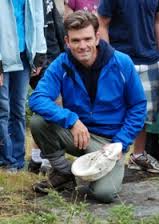Besides Sundays, there are two other holy days of obligation in the Catholic Church in Canada. In the universal Catholic Church, there are, in fact, ten such days on which Catholic must attend Mass, but in Canada, for various pastoral reasons (one may presume), the bishops have reduced them to two (sometimes transferring other days of obligation to Sundays). I’m not sure most Catholics are even aware of this, and I have my doubts they would attend all ten if required.
Anyway, the point being that both of these ‘days of obligation’ fall within a week of each other in this , both falling in the season we now celebrate: December 25, Christmas and January 1, the Solemnity of Mary, Mother of God, also known as ‘New Year’s Day’.
The title ‘Mother of God’ would may sound strange to secular, and non-Catholic, ears. Can God have a mother? Is He not eternal, with nothing, and no one, preceding Him?
The early Church always believed that Christ was, and is, God. That battle came to a head in the struggle against what came to be known as ‘Arianism’ in the fourth century. Arius, a deacon in Alexandria in north Egypt, denied that Christ was God; rather, Arius taught that he was an exalted, indeed the greatest , of all God’s creatures, sort of a great angel. The saints we celebrate today, Basil and Gregory, were great foes of Arianism, and fought hard to maintain the truth of Christ’s divinity.
The term eventually chosen to describe the relationship of the Son to the Father was homoousios, ratified at the Councils of Nicaea and Constantinople, in 325 and 381. This philosophical-sounding word, translated into Latin as consubantialis (the same in English), which literally means ‘same substance’, declared that whatever the Father was, the Son was also, ‘God from God, Light from Light, True God from True God’, as the creed from those two Councils taught.
Christ is indeed God, but what of His mother? Did she, a human, give birth to God?
Nestorius, the bishop of Constantinople in the early 5th century, thought not. Rather, he said, Mary gave birth to the human person of Christ, while the divine person remained in heaven. In other words, Christ was ‘two persons’, united in some kind of moral, existential bond, and Mary could be described as Christotokos, the ‘bearer of Christ’, but not Theotokos, the bearer of God.
When I ask students if Christ is a human person, almost all of them respond in the affirmative, after which I jokingly call them heretics. For Nestorius’ doctrine forced the Church to examine who indeed Christ was, besides what he was.
After much wrangling and reflection, the Church declared that there not, in fact, two persons in Christ, but one, the divine Person, in Whom the two natures, divine and human, were united. Thus, in the one divine Person (in Greek, hypostasis), there were two natures, without mixture or division. This union, therefore, is called the hypostatic union.
Thus, at Christmas, we celebrate the human birth of a divine Person, and one week later, we celebrate the woman chosen to give birth to this divine Person. Thus, Mary is indeed Theotokos. After the declaration of this truth at the Council of Ephesus in 431, there was great rejoicing, with icons of Our Lady paraded through the city (and you will often see the term Theotokos on icons of Mary).
By extension, since we are all now in some way joined to Christ, all mothers share in the dignity of Mary, the Mother of God, for every birth is a bringing-into-the-world of a new image of God.
Motherhood is the greatest natural vocation a woman can receive (besides spiritual motherhood in religious life). It is a sad that in our current culture motherhood is seen as something secondary, that a woman may do once her career is established; and even once established, to fit around her work schedule. I recently read an insightful article by Elizabeth Corey that argues that the mind-set required for raising children is entirely different from that to advancing in ‘professional life’.
As I have witnessed in visiting families with lots of children over this holiday season, there is great joy in raising children that can never be found out there ‘in the world’.
Our Lady saw this, dedicating her life to here divine Son, and mothers around the world share in this joy.
So happy Mother’s day, and a blessed new year, to all!
January, 2015

